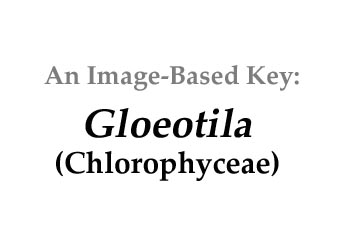|
Home / Chlorophyceae / Unicells / Non-flagellated / Gloeotila |
||||
|
|
||||
|
Click on images for larger format |
||||
Name derivation: |
||||
|
"Solitary sphere" (From the Greek eremosis -solitary,
and sphaira
-ball, sphere) |
||||
Classification: |
||||
Gloeotila Kützing 1843; 15 of 26 species
descriptions are currently accepted taxonomically (Guiry and Guiry 2013).
Order Chlorellales; Family Chlorellaceae
|
||||
Morphology: |
||||
|
Large
(up to 300 µm in diameter) spherical to subspherical or ellipsoidal cells,
solitary cell with many chloroplasts arranged in cytoplasm strands that
radiate from the center of the cell. The cell wall is composed of multiple
layers. There are numerous granules and oil droplets found in the cytoplasm. Sometimes
the cells will remain in groups of 2-4 if the cells do not completely separate
from their parents but are mostly solitary. Asexual
reproduction by autospores; 2-4 per sporangium and released by rupture of
parental cell wall.(Guiry 2012)
|
||||
Similar genera: |
||||
|
|
||||
Habitat: |
||||
|
Around and among aquatic macrophytes in ponds, lakes, and especially in association with desmids in low pH bogs.
|
||||
References: |
||||
|
Graham,
L. E. and L. W. Wilcox. 2000. Algae. Prentice Hall Guiry, M.D. and G.M. Guiry 2013. AlgaeBase.
World-wide electronic publication, National University of Ireland, Galway.
http://www.algaebase.org; searched on 15 October 2012. |
||||

